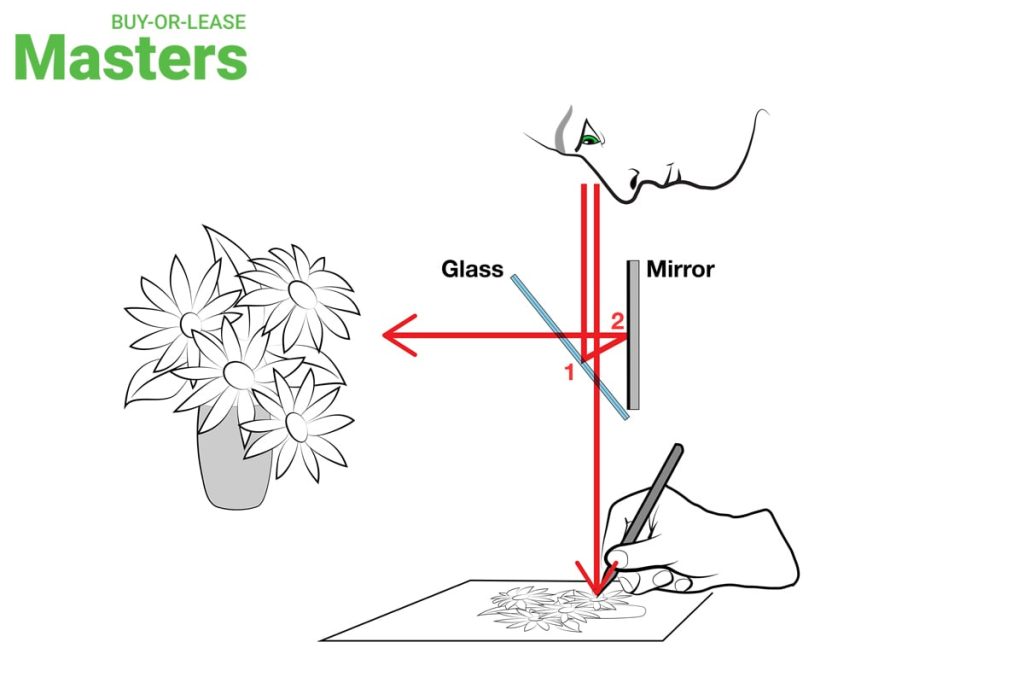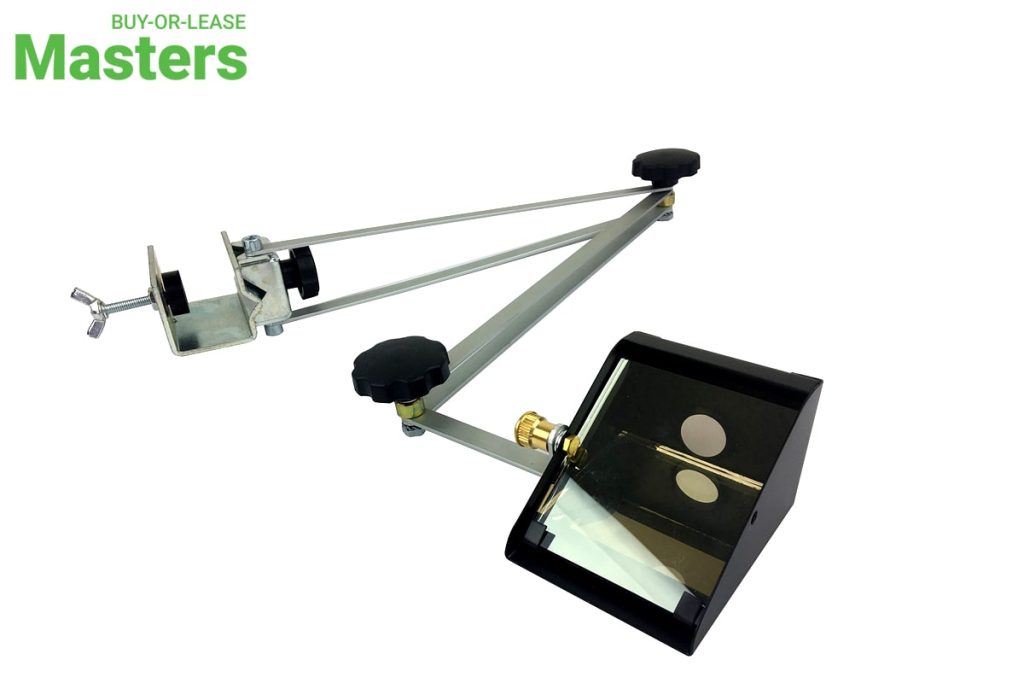Have you ever wondered how artists render their amazing drawings so accurately? While drawing by observation has been used for centuries, the camera lucida may be your secret weapon. By combining a classic optical device with popular modern technologies, the camera lucida is providing artists around the world with an efficient and precise way to capture reality and transfer images just as they see them in real life onto paper.
Come along on Mastersbuyorlease journey to explore how this unique tool helps bring artwork from dreams into reality.
What Exactly Is a Camera Lucida?
Before delving into its mechanisms, it’s important to first clarify what exactly a camera lucida is. This optical device was invented by William Hyde Wollaston in the early 19th century, and has been used by artists since then as an aid for drawing. The name “camera lucida” is derived from Latin words meaning “light chamber”, and is precisely what the device creates a darkened space with a tiny beam of light that reflects onto the paper, allowing the artist to see both their hand and the subject they are drawing.
The Physics Behind It
The camera lucida works by using an angled prism or mirror to reflect light from an object through a lens onto a surface, such as paper. This creates a virtual image that the artist can trace and recreate onto their own paper. The prism or mirror is what gives the device its characteristic “L” shape, allowing for a simple yet effective setup.
How Does a Camera Lucida Work?

Now that we have a general understanding of what a camera lucida is and its basic components, let’s dive further into the mechanics behind how it works. In simple terms, the device uses two lenses, one to project light from the subject onto a surface and another to allow the artist to see both their hand and the image simultaneously.
The Role of Light
Light is a crucial component in the functioning of a camera lucida. The light source used can vary, but traditionally, sunlight or artificial light such as a lamp was used. Today, with advancements in technology, LED lights have become a popular choice due to their brightness and energy efficiency.
The Magic of Mirrors
Another crucial aspect of how the camera lucida works is through the use of mirrors. A prism or angled mirror is used to reflect light from the subject onto a surface. This creates a virtual image that appears on the paper, allowing the artist to trace and replicate it with accuracy.
The Power of Lenses
Without lenses, a camera lucida would not be able to function efficiently. The first lens projects an upside-down image of the subject onto a surface, while the second lens allows the artist to see both their hand and the image at the same time. The lenses work together to create an accurate representation that can be easily traced.
Modern Advancements

While traditional camera lucidas are still widely used by artists today, modern technology has brought about new advancements in this device. With the rise of digital art and drawing tablets, camera lucida apps have become a popular alternative. These apps use the camera on a smartphone or tablet to project an image onto the screen, allowing for digital tracing.
Additionally, 3D printed versions of the camera lucida have also surfaced, providing artists with a more portable and affordable option. These advancements have made the camera lucida accessible to even more artists, expanding its use in the art world.
How to Set up a Camera Lucida?
Setting up a camera lucida can be done in just a few simple steps:
Step 1: Attach the device to the top of your drawing board or easel using clamps or tape.
Step 2: Adjust the angle and height of the device until you are able to see both your hand and the subject clearly on your paper.
Step 3: Use a light source such as a lamp or natural sunlight to project the image onto your paper, and you’re ready to start drawing.
The advantages of using a Camera Lucida for drawing
The camera lucida has several benefits for artists, including:
- Accurate tracing: The device allows for precise tracing of images, making it a valuable tool for artists who want to capture realism in their drawings.
- Time-saving: With the aid of the camera lucida, artists can skip the initial sketching phase and jump straight into creating detailed drawings.
- Portable: With modern advancements, camera lucidas have become more compact and portable, making them ideal for artists who like to work on location.
- Versatile: The device can be used with a variety of mediums, including pencils, pens, and watercolors, allowing for versatile use by artists.
Read more topic: How Camera Focus Works?
Different types of Camera Lucidas available
There are several types of camera lucidas available, including:
- Classic Camera Lucida: This is the traditional device invented by William Hyde Wollaston, consisting of a prism or angled mirror and lenses.
- Reflecting Prism Camera Lucida: This version uses a reflecting prism to create a virtual image onto paper.
- Mirror-Type Camera Lucida: Similar to the classic camera lucida, this version uses a mirror instead of a prism to reflect light onto the paper.
- Digital Camera Lucida: As mentioned before, these are apps that use a smartphone or tablet’s camera to project an image onto the screen for digital tracing.
Tips for getting the most out of your Camera Lucida
To make the most out of your camera lucida, consider these helpful tips:
- Practice makes perfect: Like any tool, it takes time and practice to become comfortable and proficient with using a camera lucida. Don’t get discouraged if your first few attempts don’t turn out as expected.
- Experiment with different lighting: Depending on your subject and preferences, try experimenting with different lighting sources to find the one that works best for you.
- Use a stable surface: To ensure accuracy and precision, it is important to use a sturdy drawing board or easel when setting up your camera lucida.
Popular examples of artwork created with the help of a Camera Lucida
Some well-known artists who have used the camera lucida in their work include:
- Pablo Picasso: The famous cubist artist was known to use a camera lucida to achieve accurate proportions and perspectives in his drawings.
- Edgar Degas: The French impressionist painter also utilized the device in his artwork, especially in his early career.
- David Hockney: This contemporary artist is known to use a digital camera lucida in his iPad drawings.
- Chuck Close: The American painter and photographer has used a camera lucida in his hyper-realistic portraits.
Conclusion
To sum up, the camera lucida is an incredibly helpful device that has been aiding artists for centuries. By creating a dark space with a beam of light, the camera lucida helps to transfer images onto paper in a precise way. This has allowed artworks that may have only ever been imagined until then to come into reality. Nowadays, this amazing tool is being further enhanced by modern technology, allowing even greater accuracy and detail when capturing life on paper. Artists all across the world are highly appreciative of this incredible invention and hopefully will continue to benefit for many years to come. If you are interested in learning more about the amazing camera lucida and how it works or if you’d simply like to share your experience with it please leave a comment below!
Frequently Asked Questions
Where Can I Get Hold of a Camera Lucida?
Amazon, eBay, and other online retailers have a variety of camera lucidas available for purchase. There are also DIY versions available that can be made with simple materials such as mirrors and cardboard.
Can I Use a Camera Lucida to Trace Photographs?
Yes, the device can be used to trace any image you desire, including photographs.
Can I Use a Camera Lucida with Any Medium?
Yes, the camera lucida can be used with various mediums such as pencils, pens, watercolors, and even digital software.
Do All Artists Use a Camera Lucida?
No, not all artists use a camera lucida. It is a matter of personal preference and style. Some may prefer to draw freehand, while others may find the aid of a camera lucida helpful in achieving accuracy. However, many famous artists have used this tool at some point in their careers.
What is The Disadvantage of CameraLOucida?
One of the common approaches used in art is Camera Lucida (CL). This technique, although widely used, does come with some drawbacks. For instance, it can be quite time-consuming and may present challenges with hand-eye coordination during the painting process. This can sometimes result in a less engaging experience for the user. Additionally, CL tends to produce grayscale output images, which may not always capture the full vibrancy of the original artwork. Despite these limitations, Camera Lucida remains a popular tool among artists for its unique capabilities.


Leave a Reply